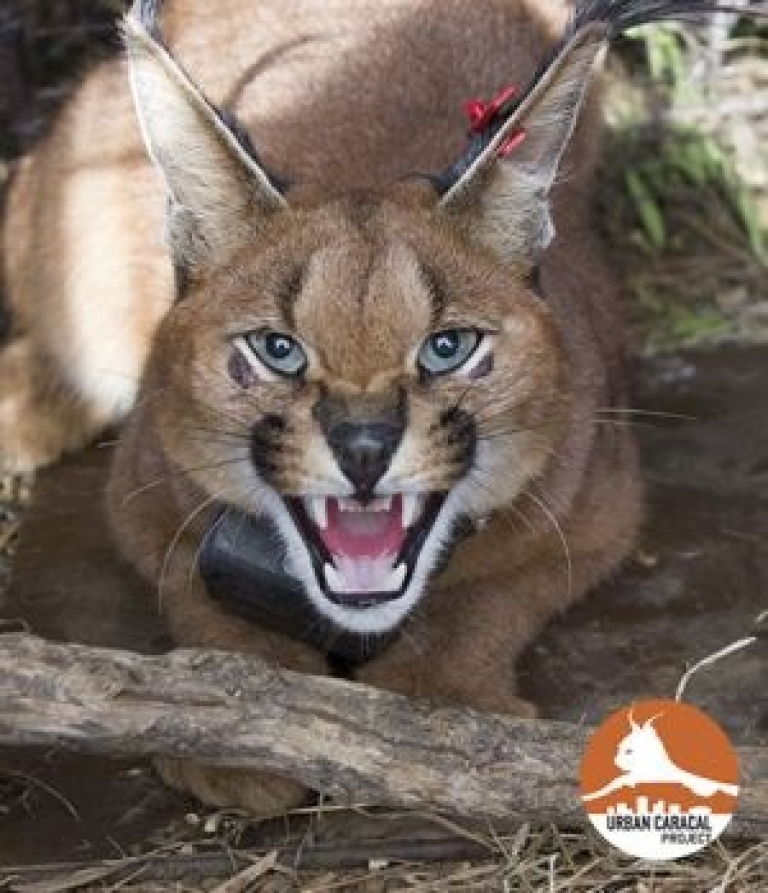Cape Town - A young male caracal called Jasper was hit by a car while crossing the busy M3 in Cape Town this week - something that a local researcher had long predicted after studying him for the last few months.
The wild cat frequently encountered this road while travelling between fragmented habitats.
He caught a driver by surprise when he skitted across the road on Tuesday morning near Newlands Forest.
A necropsy later confirmed he sustained major fractures to the head and hindquarters, which likely resulted in an immediate death, with no suffering.
Within an hour of the incident, five people had reported the death to wildlife biologist Dr Laurel Serieys, and her interns were able to recover the cat and his radio collar.
This was a critical moment for Serieys to collect data for her Urban Caracal Project. She has been studying the caracal population in the Peninsula since November.
Increased vulnerability
Three pieces of interesting data immediately emerged from the accident.
The first was that, despite being an active night time species, Jasper tried crossing in broad daylight.
Second, young males that must travel to find territories unoccupied by older, adult males may be forced to cross major roads in highly urbanised areas to seek out “new” territory, increasing their vulnerability to death associated with human activities.
Third, was that so many people reported his death, indicating to Serieys that the community thought her work worthwhile.
“Vehicle collision, thus far, has been the most frequent source of mortality that we’ve observed for caracals on this study,” she said.
“To persist in Table Mountain National Park, caracals must travel across roads to find sufficient prey and potential mates, and so in this need, they are vulnerable to vehicle collision.”
![]()
The purpose of the study is to establish how extreme isolation may be driving evolutionary changes in their genetics and how they may be adapting to their extreme isolation behaviourally.
One of her key findings, thus far, is that the animals are exposed to commonly used rat poisons, likely because they consumed rodents exposed to the poisons in urban areas.
Interestingly, the doctor observed in her previous study that bobcats in California were more likely to be hit by cars if they were recently exposed to the ubiquitous poisons.
“These animals are representative of what could be happening for other animals in the peninsula,” she told News24.
Meeting the caracals
Serieys has followed the movement of eight caracals to date –Laduma, Savannah, Fire Lily, Ratel, Oryx, West, Marine and Jasper - of which only four are still radio-collared and being tracked.
Savannah was killed by a car three weeks after the team started tracking her.
She said this particular population may not be very large.
Her project partners include the University of Cape Town, the City of Cape Town, SANParks and the Cape Leopard Trust.
Before this, Texas-born Serieys conducted a successful six-year research and bobcat conservation project in Los Angeles, California.
She has fieldwork funding until December 2016 and effectively runs a one-woman show, although she does have interns assisting where possible.
It’s an expensive operation and she needs equipment such as radio collars (which come in at R30 000 each) and remote wildlife cameras (R4 500 each).
Her time in Cape Town has not been all smooth-sailing and her remote cameras, a trap and a work bag have been stolen.
A large-scale fire that swept across the peninsula burned approximately a third of her study area.
“When I start feeling frustrated, the cats will do something interesting or 20 000 people will view a Facebook post of mine. There really is overwhelming support.”
![]()
Soure: http://www.news24.com/SouthAfrica/News/Tracking-Cape-Towns-urban-caracals-20150716

















